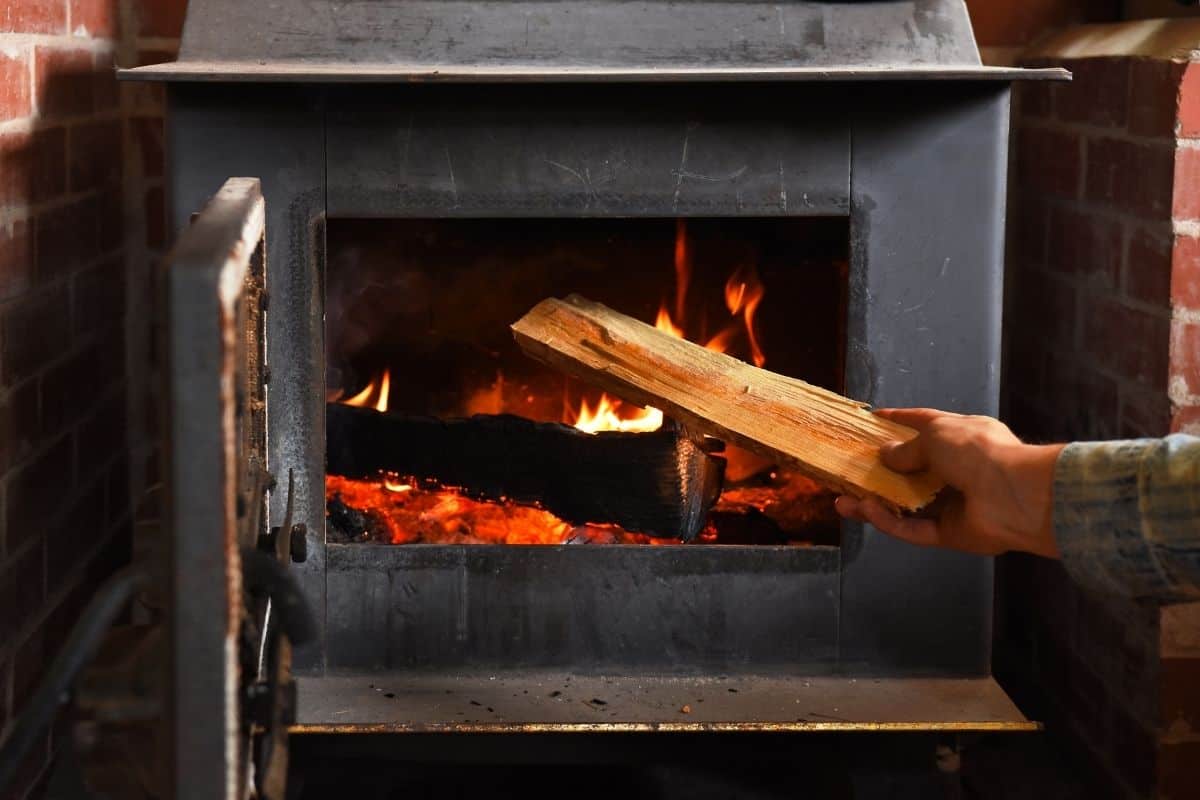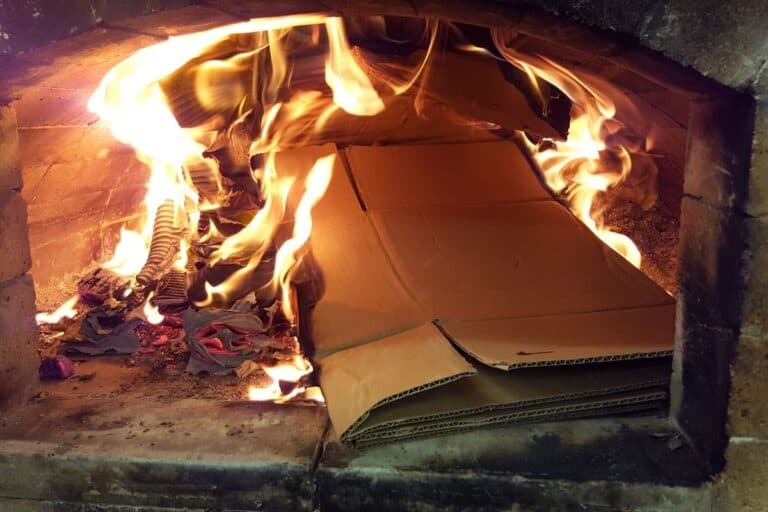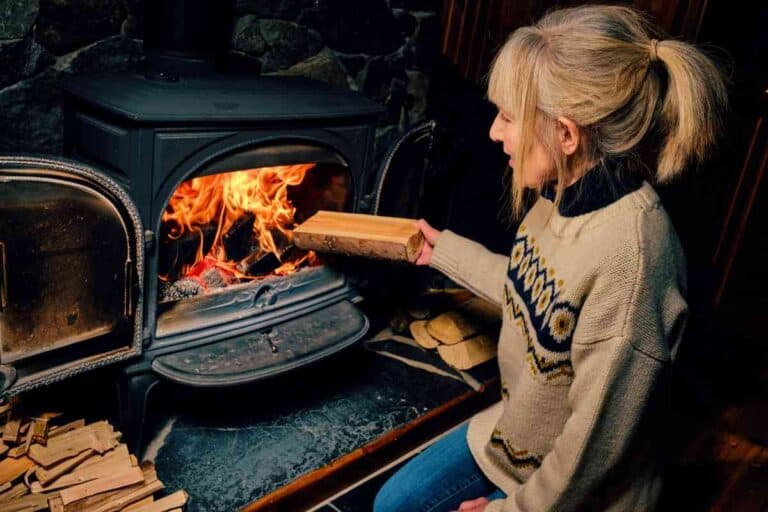Can You Vent a Wood Stove into a Chimney? (Solved)
You’ve finally invested in a wood stove after toying with the idea for months. But there’s one problem. You don’t know how to vent it. You’ve heard that you can vent a wood stove into a chimney, but you’re unsure if that’s the right thing to do.
You can use your chimney to vent a wood stove. However, for it to work perfectly, you need to ensure you have the correct chimney type, flue diameter, fireplace opening size, stove heat output, room ventilation, and hearth size and thickness.
This blog post discusses the different factors to consider before venting a wood stove in a chimney. We’ll also give you some tips on what to do if you’re having trouble with your wood stove. By the end of this post, you’ll know everything you need to about venting a wood stove into a chimney. So, let’s jump right in. Shall we?
Can I Vent a Wood Stove Through an Existing Chimney?
Like many wood stove owners, you may be wondering if you can vent your wood stove through an existing chimney. The answer is, it depends. There are a few factors you need to take into account before deciding whether or not to vent your wood stove through an existing chimney.
Chimney and Flue Size
You can only fit your wood stove in your fireplace if it has a class 1 chimney. If you had an open solid fuel fire before, this should be the case. However, if you’re replacing a gas fire, be sure to check that it’s not class 2 or pre-cast flue, as these won’t be suitable for a stove.
Next, you’ll want to ensure the fireplace flue is the right size. It’s crucial to connect your wood stove to the right flue size. Otherwise, it won’t work well and may be hazardous.
Distance to Combustibles
Another crucial consideration is the distance of your wood stove to any combustible materials. This includes things like walls, floors, and ceilings. The further away these are, the better.
The allowable distance between combustibles and wood stove varies depending on the make of the stove. Therefore, be sure to check the manufacturer’s instructions.
However, if your fireplace is made of only stone, brick, and other non-combustible materials, there’s no requirement on how much distance you should keep. However, if the stove is too big to leave enough room in the chimney, insufficient air may affect its performance.
Stove Heat Output
Wood stoves typically emit more heat than fireplaces. Therefore, you need to consider this when deciding whether or not to vent your wood stove into the chimney.
As a general rule of thumb, avoid overloading your wood stove to balance the amount of heat being emitted.

Ventilation
It’s also crucial to ensure the room where the fireplace is well-ventilated. You see, wood stoves require sufficient air to burn efficiently. If there’s no ventilation, you’ll have a hard time getting the smoke out of the chimney and getting the fires started.
Therefore, before you begin the installation process, make sure the room is adequately ventilated.
Stove Hearth and Surround
Lastly, you need to follow the correct instructions regarding your hearth. Since your wood stove is likely to have a different size and shape to a traditional fireplace, don’t assume it will work without ensuring the hearth checks all the boxes below:
- Extends at least 300mm to the front and 150mm to both sides of the stove.
- Has an area of at least 840 x 840mm
- It’s at least 12mm thick
- It’s made from non-combustible materials
- It has no cracks
If the hearth exceeds 100°C, stove installation regulations require that it’s at least 250mm in thickness.
You may also want to consider the surround you have around your old fireplace. If it’s made from non-combustible materials, there is no need to replace it. However, a fireplace beam is more appropriate if it features combustible materials.
Source: Direct Stoves
How Do You Vent a Wood Stove with a Chimney?
Once you’ve ensured your wood stove meets the above requirements, the next step is venting it with a chimney. Doing so helps to improve both the performance of your wood stove and the safety of using it.
There are two main ways to vent a wood stove with a chimney: through the roof or an existing fireplace. If you’re venting through the roof, you’ll need to install a metal chimney that extends from the top of your wood stove.
If you’re venting through an existing fireplace, you’ll need to:
- Purchase an energy-efficient wood burner and flue.
- Have the flue or flue line checked.
- Have the chimney swept before installation.
- Install a stove pipe through the chimney.
- Fit a fire surround.
- Fit the flue outlet at the top of the wood burner.
- Fit the registered plate into the frame.
It’s advisable to hire a professional to install your wood stove and chimney. This way, you can be confident the job is done correctly and safely. Improper installation can be a fire hazard.
Be sure to read the manufacturer’s instructions carefully before beginning any work. And always follow local building codes.
Source: Chimney Solutions and Interiors Place
How Far Should Stove Pipe Go into Chimney?
One of the questions you may have while preparing to install a wood stove is how far the stove pipe should go into the chimney.
As a general rule of thumb, ensure it’s as short as possible and no longer than six feet.
Source: eHow
How Do You Run Stove Pipe Through a Chimney?
The best way to run a stove pipe through a chimney is above the fireplace damper through the masonry hole cut above the hole. Be sure to seal the damper tightly to prevent the entry of gases into the room. The best materials for this are rock wool or sheet seal since they’re energy-efficient.
Wrapping Up
So, can you vent a wood stove into a chimney? Yes, but it’s essential to do so correctly to prevent any damage or accidents. Be sure to follow the guidelines we’ve shared in this article and consult with a professional if needed.






